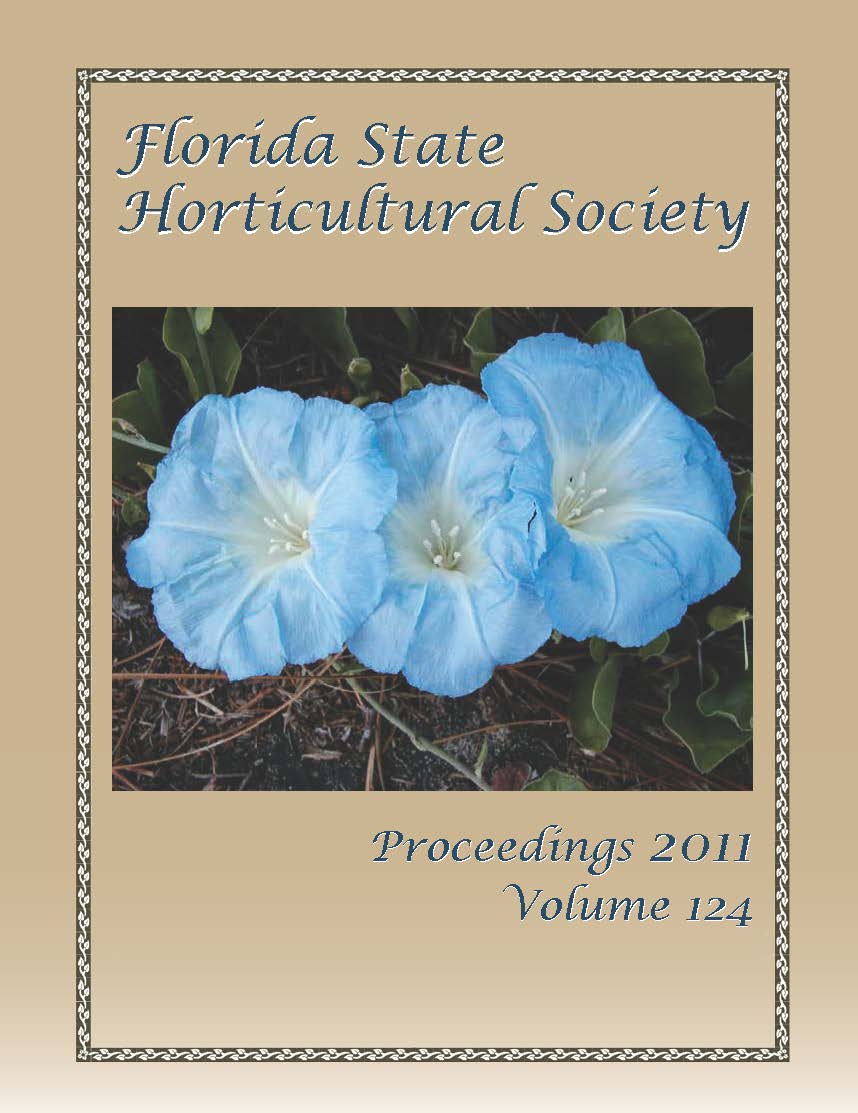Estimating Strawberry Yield and Sting Nematode Impacts Using Counts of Plant Sizes and Fruit Stems
Resumen
The objectives of these studies were to: 1) evaluate plant size distributions (canopy diameter) in the field as potential indicators of strawberry yield; and 2) to evaluate temporal relationships between strawberry plant size and average fruit weight and numbers of fruit stems (peduncles) per plant for plants exhibiting different levels of plant stunting due to the sting nematode, Belonolaimus longicaudatus. The intent was to establish a chronological record of total fruit picked from the plant during the season for assessing differences in fruit yield among three size classes of nematode stunted plants, small (≤20 cm), medium (>20 cm and ≤30 cm) and large (>30 cm) plant sizes. The relationships between fruit weight and numbers of fruit stems per plant with average canopy diameter were always well described by quadratic, polynomial functions for all years and farm locations. In general, 70% to 75% of the variability in fruit stem counts per plant was explained by changes in canopy diameter. However, even when the same strawberry variety was used, different functional relationships between canopy diameter and counts of fruit stems were observed between years and farm locations. Overall, field scale changes in strawberry crop productivity due to sting nematode can be accurately determined, on a farm-by-farm basis, from end of season assessments of plant sizes and counts of fruit stems per plant.

